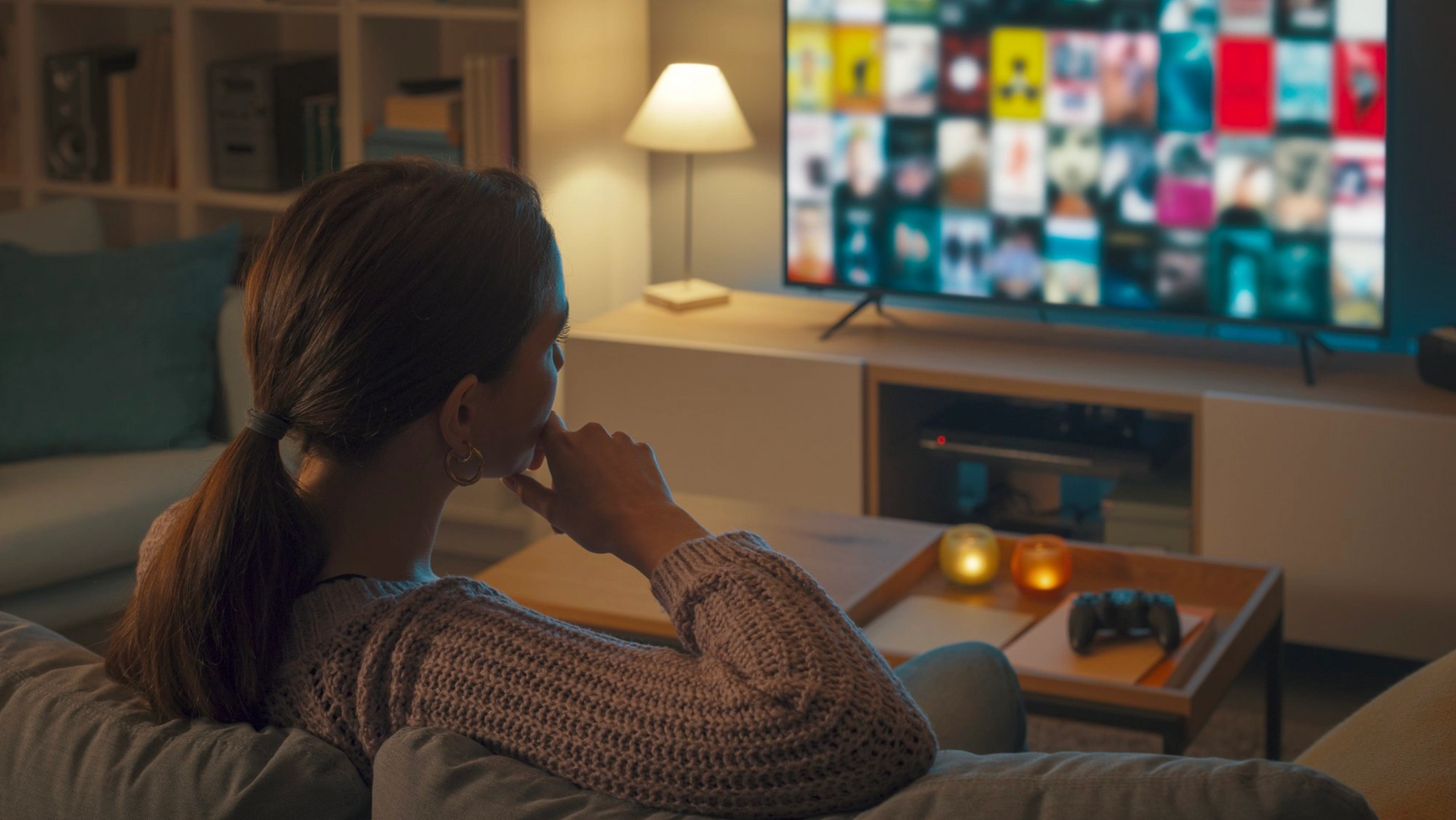The streaming market is entering a new phase. Big streaming services are looking for new ways to keep growing, as consumers have reached their limits. Advertising models are making a comeback, and the smart TV brings interesting opportunities for smaller players.
The major players are struggling to meet their targets as production costs for TV shows continue to rise. For the first time, Disney+ experienced a decline in subscriptions and announced a round of lay-offs to save $5 billion worldwide. Netflix is struggling with the challenge of sustaining growth and is exploring ways to charge users extra for sharing accounts. Initially, Netflix is expecting cancellations as a result, followed by a gradual increase in subscribers (and thus revenue) as password sharers will create their own accounts. Viaplay also raised their rates this year, despite previous claims they would not. And HBO Max entered the Dutch market with the promise of a lifetime 50% discount, but has already raised prices in the United States, and the Netherlands might follow suit. After all, the ideal time for a price increase is now.

Impact of price increases
The big question is how the collective price increases will land with the average Dutch user. During the global pandemic, prices for streaming services were lower and home entertainment was in high demand. Three out of 10 Dutch people now subscribe to two or more paid streaming services. Recently, it was announced that a recession had been averted. However, high energy costs and supermarket prices and lower demand after the COVID pandemic will cause Dutch people to be more critical when purchasing streaming services. To be fair, how many of these do you really need?
In the US, often a precursor to our consumer behavior, 20% of subscribers state they canceled their streaming service as a result of inflation. According to Antenna, an increasing number of consumers leans towards a ‘watch, cancel & go’ approach. After finishing a hit series, they cancel their subscription and switch to another streaming service for the next series. This is why popular series, for example The Rings of Power and The Mandalorian, increasingly choose to stream one episode per week.
New revenue models, broader audience
In their quest for higher revenue, streaming services are currently considering new revenue models. Netflix and Disney+ are both introducing cheaper subscriptions with ads: SVOD (subscription video on demand) will be combined with AVOD (advertising-based video on demand). According to Tweakers, this can be interpreted as an implicit acknowledgment that current subscriptions are too expensive for many potential customers.
Disney+ sees this new revenue model primarily as an opportunity to reach an even broader audience, as Disney CEO Bob Chapek stated in the Q2 2022 earnings call. His successor, Bob Iger, chiefly responsible for the development of Disney+ and back at Disney after a brief hiatus, is pushing the same line: "Instead of chasing (subscribers) with aggressive marketing and aggressive content spending, we need to start chasing profitability." He is currently exploring opportunities to resell licenses to other streaming companies, for example. However, companies like Amazon and Apple are not likely to go down this route, as they make sufficient revenue from their core business. According to Sky News, Disney is also looking at new subscription formats, for example, a Disney+ subscription with only Star Wars or linking to theme park admission tickets.
It sounds like a cliché, but in this case, it is true: the streaming landscape is evolving. And the real dynamics are just beginning.
Distribution is everything
For the success of a streaming service, frictionless viewing is vital. That makes the sale of broadcast rights particularly important. If you want to watch Formula 1, for example, you can only do so directly via an annual subscription to F1TV or an extended subscription from Viaplay, where you also pay for the Bundesliga and PDC Darts.
For companies like Ziggo and KPN, getting consumers to pay for their television connection is becoming a challenge. Consumers want internet without TV and coaxial cables throughout the house. Telecom parties are therefore shifting their attention to internet modems, on which they add shortcuts to several streaming services and YouTube. However, the internet modem is not the only device you need to watch broadcasts.
The smart TV revolution
The majority of Dutch and Flemish people had a smart TV in 2021, this was the outcome in the TV user survey (pdf) by DPG Media. The operating system (OS) of the smart TV has therefore become a new playing field. This is where all entertainment services ultimately come together in one overview: streaming services, music, online games and linear TV such as sports, news and specific niche channels. The experience is improved by functionalities such as voice search via a smart speaker, universal search across all channels, higher video quality and directly duplicating your screen from your smartphone or using it as a remote control.
The world's largest TV streaming platform at the moment is Tizen, developed by Samsung. At the end of last year, the new Tizen OS became available for smart TVs from brands other than Samsung. This has happened before with LG's webOS Hub. Due to the rapid adoption of smart TVs, TV manufacturers are taking on a new role in generating revenue from advertisers and content creators. For example, Samsung is now busy making all kinds of partnerships with providers of linear TV to attract the attention of viewers. Unlike the 'dumb' TV, the smart TV is no longer the so-called last mile in the distribution of content, but rather the gateway. With Samsung TV Plus, all content is free and accessible without a login, additional devices or subscriptions. But as always with advertisements: the AVOD pricing model.
Instant access to viewers
Smart TVs enable a direct connection between content creators and viewers, all it takes is an AVOD app and a partnership with a TV manufacturer. For example, there is a Videoland app with TV series from RTL and live streaming of Big Brother, and an NOS app that allows viewers to watch the latest news and sports broadcasts such as the Dutch Journaal or Studio Sport.
Relatively small players thus stand side by side with big players like Netflix and Apple TV. Big opportunities lie in local content and bonding with your viewers. Every Dutch person knows media brands like Linda de Mol, nu.nl and De Telegraaf. Through smart TV and customized content, these can break through to a new viewing audience. The streaming landscape will thus become even larger with more local offerings. Stay tuned.
Industry insights, company updates, and groundbreaking achievements. Stories that drive Hypersolid forward.
Solid change starts here


